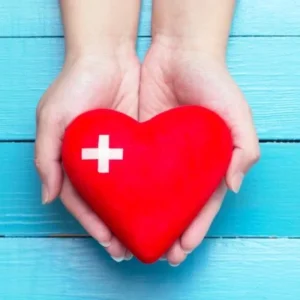WHO/Europe has launched a new guidance tool aimed at promoting health through sports by supporting sports clubs, managers, and decision-makers to integrate health promotion into the core of their activities. While sport is widely recognized for its physical, mental, and social benefits, participation alone does not automatically ensure improved health outcomes, as risks such as injuries, exclusion, discrimination, or unhealthy sponsorships can undermine its positive effects. The “Health Promoting Sports Club Management Implementation Guide” seeks to embed health promotion systematically into the policies, strategies, and everyday practices of sports clubs.
The guide was unveiled during a conference in Lithuania celebrating the 20th anniversary of the European network for the promotion of health-enhancing physical activity (HEPA Europe Network). Supported by WHO, the network brings together regional, national, and subnational organizations committed to advancing physical activity and healthier lifestyles. Sports clubs, which engage 54 million participants with support from 27 million volunteers across Europe, are viewed as strategic venues for promoting physical activity and healthier choices, influencing children, families, and communities.
Physical activity is one of the most effective ways to reduce the risk of noncommunicable diseases (NCDs) such as cardiovascular diseases, diabetes, and cancer. Achieving WHO-recommended activity levels—150 minutes of moderate-intensity activity per week—could prevent 11.5 million new NCD cases in the European Union by 2050 and generate €8 billion in annual economic benefits. The guide emphasizes that health-promoting sports clubs go beyond building athletic performance, contributing instead to inclusive, resilient, and healthier societies.
A health-promoting sports club is defined as a non-profit organization that intentionally incorporates health promotion into all its policies and activities. Key principles include addressing multiple health topics such as nutrition, mental health, inclusion, sustainability, and injury prevention; engaging all stakeholders, including coaches, athletes, managers, and parents; partnering with external organizations; tailoring initiatives to the club’s context; and treating health promotion as an ongoing, evolving process.
The guide introduces a staged model, allowing clubs to gradually develop from basic actions, such as providing water or banning smoking, to comprehensive, structured health strategies. Practical tools, including evaluation forms and checklists, enable clubs to assess their facilities, digital presence, cafeterias, accessibility, and overall environment. These tools help identify gaps, set priorities, and translate evaluations into concrete actions. They also support local authorities, federations, and health agencies in monitoring progress, ensuring accountability, and scaling successful initiatives.
WHO/Europe emphasizes that health promotion within sports clubs is a strategic investment in public health and social cohesion rather than an additional task. Collaboration with the European Commission’s Directorate General for Education, Youth, Sport, and Culture supports EU Member States in implementing HEPA policies and tracking outcomes. According to Dr. Stephen Whiting, the guide provides practical tools to empower sports clubs as drivers of healthier, more resilient communities across Europe and beyond.







